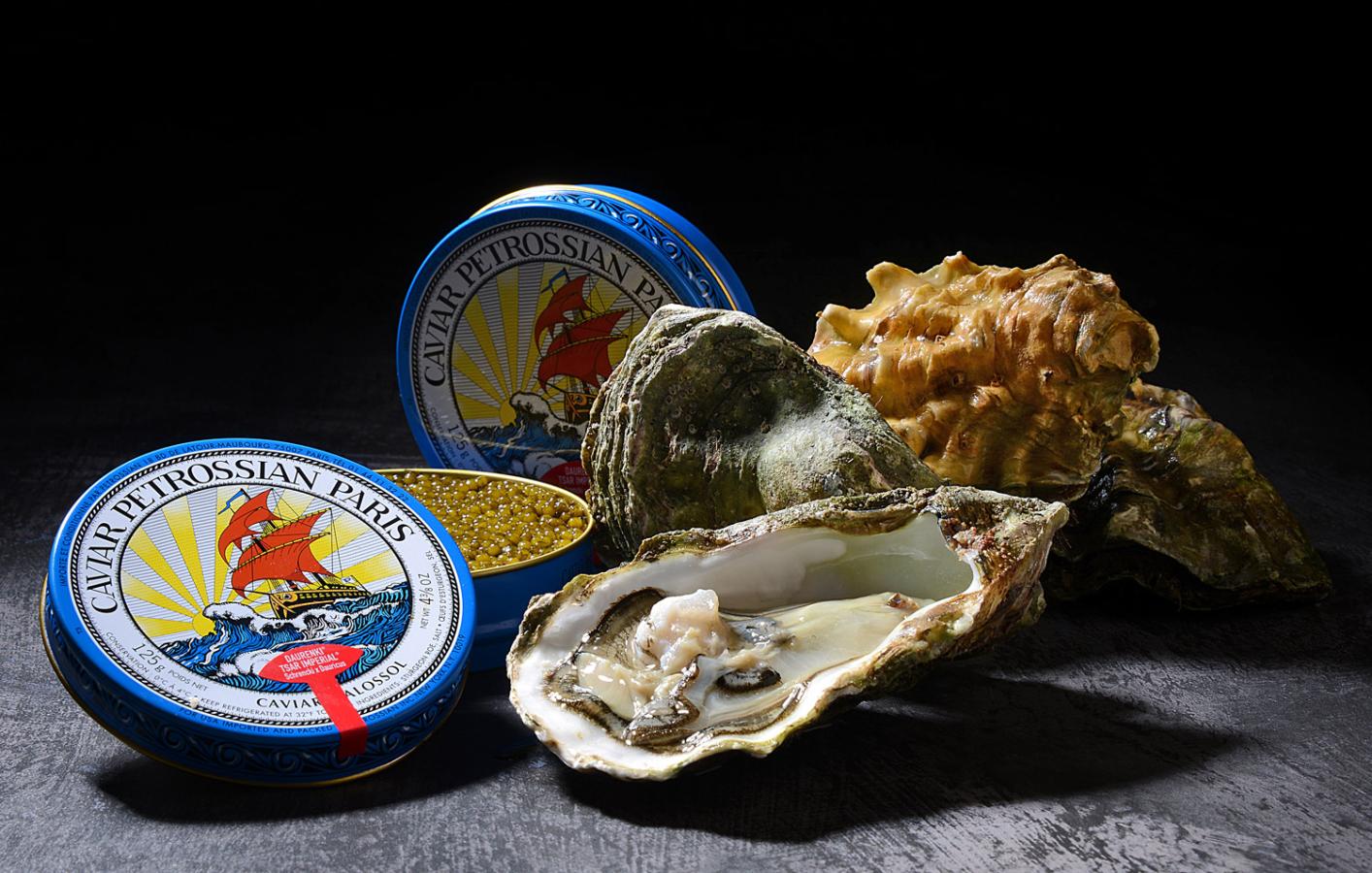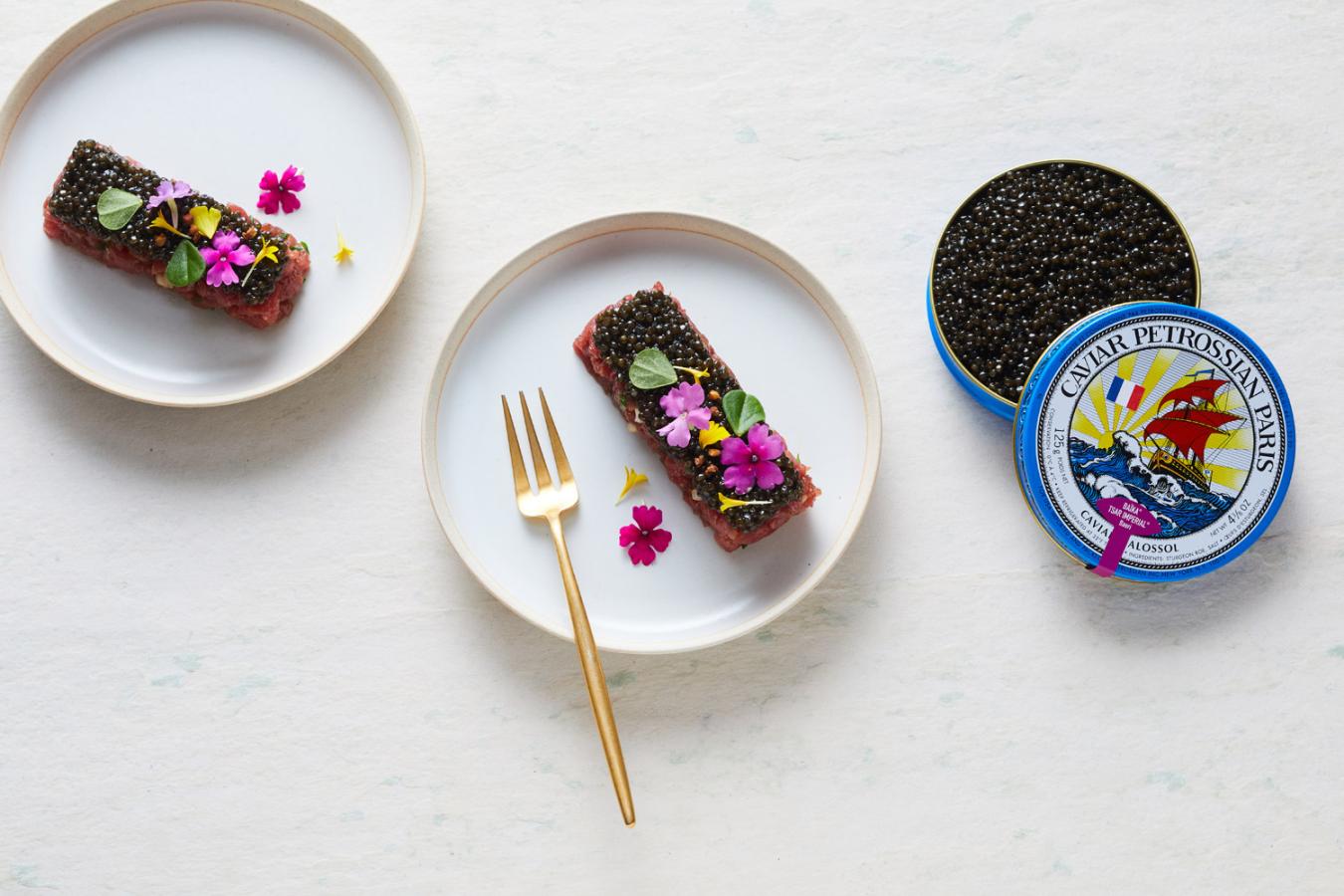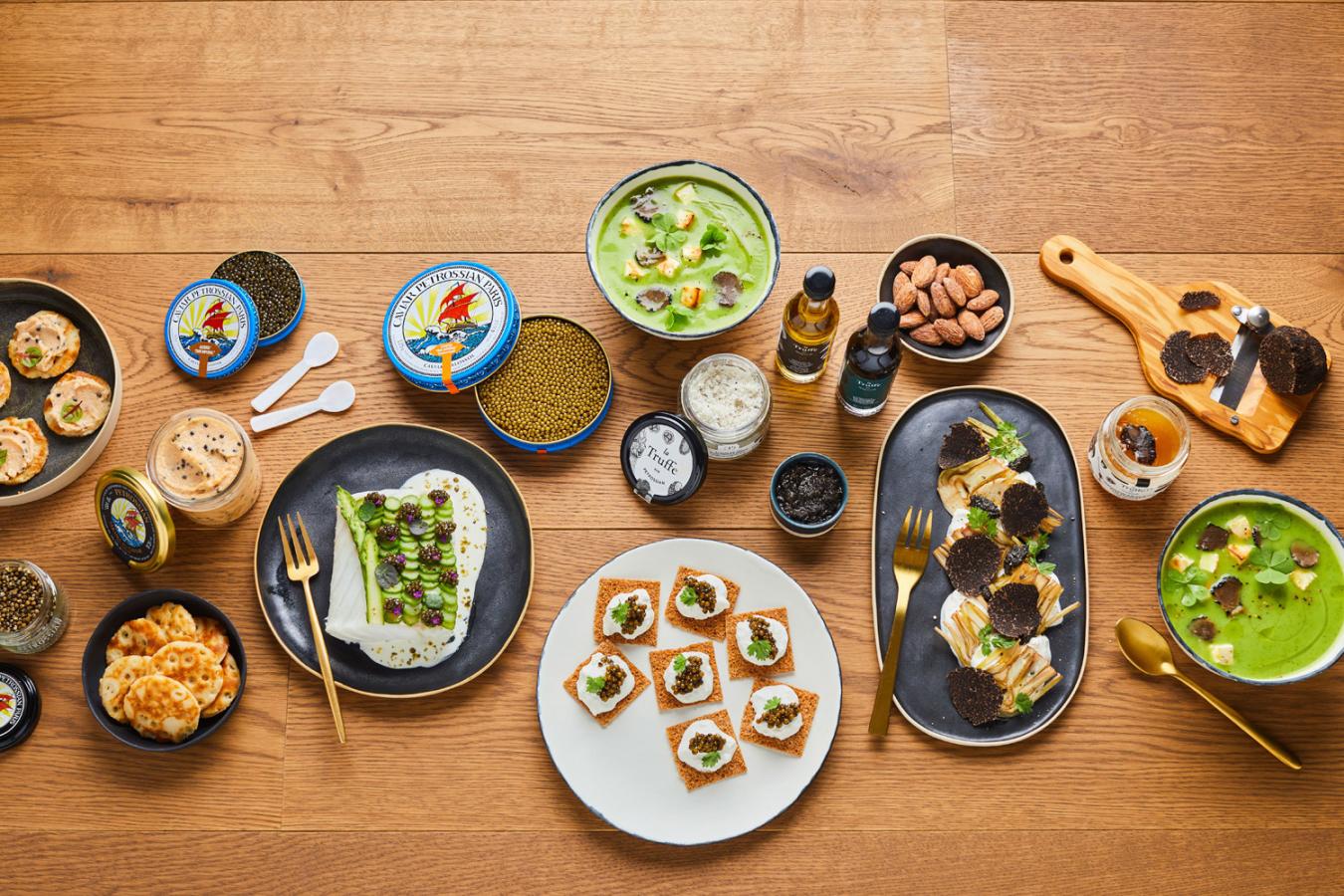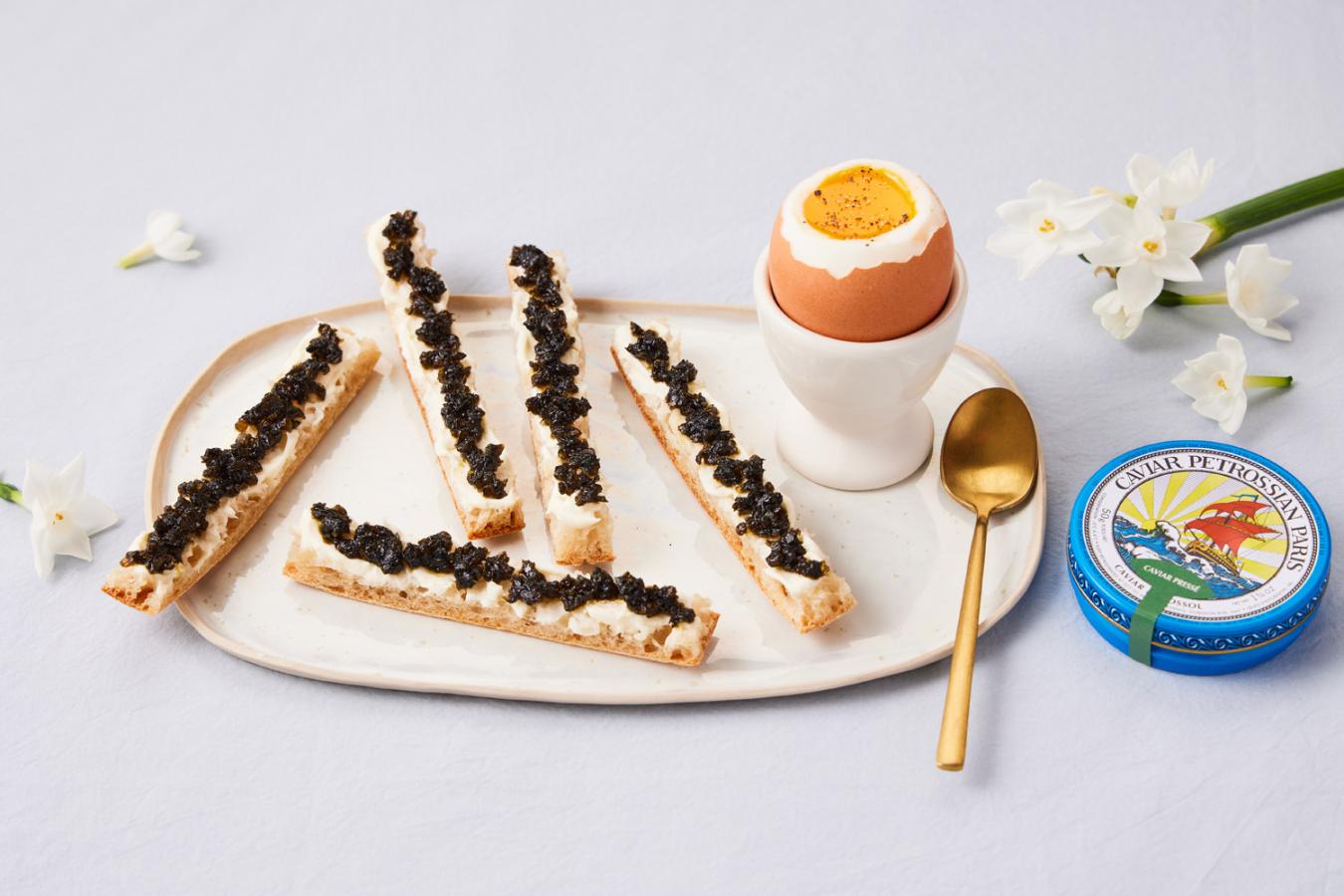Petrossian Caviar
I am old enough to remember the rarity of seeing caviar on a restaurant’s menu. Dining at Michelin-starred restaurants was a regular occurrence in the early 1990s, yet the only recollection I have is from Marco Pierre White at Harvey’s. His now-legendary Tagliatelle of Oysters with Caviar was a right of passage for this writer along with Pigs Trotter Pierre Koffman. It is, of course, guaranteed that other gastronomic giants featured caviar. The notion that Le Gavroche, Manoir aux Quat Saisons didn’t would be absurd - I just cannot recall them. That makes me feel a little sad writing it as they should be stand-out dishes where the caviar is not there for show, but an integral component.
I wish I knew what type of caviar MPW used, but I lost my original copy of White Heat to research it many years ago. I can only assume, that with his obsessive attention to detail, it was a very conscious decision and one that only a handful of chefs in the UK would be able to make. I was certainly only aware of Ossetra or Beluga caviar, and unaware that these came in different grades.
Today, Caviar is widely available through high-end retailers and online. As with most food items, there are varying levels of quality with Petrossian being one of the very finest. A recent visit to their new purpose-built UK facility afforded me an opportunity to discover more about the brand and the caviar they offer.
Whilst their UK facility may be new, Petrossian was founded in 1920 by two Armenian brothers, Melkoum and Mouchegh in Paris. Although it was a challenge to gain caviars’ acceptance as a luxury product, through hard work, determination, and testament from hotel legend Cesar Ritz, it was soon being enjoyed by the upper echelons of French society at the grandest of hotels. Today, caviar still stands as one of the last truly luxury foods.
In decades past caviar came from wild sturgeon in the Caspian sea until overfishing saw them become endangered. This led to the advent of sturgeon farms around the world which account for virtually all the caviar harvested today. The sustainable management of stock levels can only be a positive, alongside knowledge, gathered from marine biologists about water quality, to increase the quality of the fish.
Unlike most foods derived from fish, caviar is left to mature. Petrossian matures their caviar for between 4-6 months, only releasing it when deemed to be of suitable quality. The maturation process takes place in 1.8kg tins that “breathe”, subsequently, the caviar gains greater texture, and more flavour, whilst extending the potency of their finish. Throughout the maturation process, the tins are regularly “tapped” to remove any pockets and tasted to ensure the correct balance between caviar and salt.
Some key facts:-
- Sturgeon only start producing eggs after 5-7 years of age meaning a long-term investment in the farms. With such a long maturation period, sustainability and stock management are key.
- Some varieties of sturgeon, like Beluga, do not reach sexual maturity and therefore do not produce eggs until the age of 25.
- The caviar harvested from sister sturgeons, being of the same age, can vary widely having a different colour and size.
- In general, caviar ranges from black to golden amber to rich, viridian greens. The colour varies across each varietal and often helps indicate the quality of the caviar, the age of the sturgeon and even the climate in which they were raised. This is what makes grading the caviar so important.
- Certain chefs can now specify a profile of caviar from companies like Petrossian to their own flavour profile. This is accomplished by the in-house Caviarologist working alongside the chef to create a product unique to their restaurant, or even a single dish.
- Caviar is best enjoyed at circa 9°centegade.
- Avoid using a silver spoon when serving as this reacts with the caviar.
Whilst we may enjoy caviar in restaurants, having it as part of home dining is often overlooked. It has become commonplace to consume other luxury foods so why not caviar as well? There is a world of uses for it beyond blinis. For instance, you may consider putting it on toasted soldiers with cream (Petrossian’s special 1835 Pressed Caviar work wonderfully here) to accompany boiled eggs, or with smoked salmon any way you choose, but I find it delicious in a bagel.
You may like to think of caviar as an alternative form of seasoning when used diligently, which also adds a textural element to a dish. I know that I shall be paying more attention to menus going forward and ascertaining which style of caviar is being served - the differences really are quite pronounced as described by Petrossian:-
Ossetra caviar - Colours can range from amber to bronze with golden highlights that are often compared to pearls. It’s texture is firm with the eggs rolling between the palate and tongue where the flavours become more pronounced. It can be quite delicate, with a balance between full-bodied brininess, nutty notes and strong notes of the sea.
Daurenki caviar has large, luminous eggs that range from bronze to golden in colour. The texture is very firm, in contrast to its gentle flavour.
Baeri Baïka caviar is smaller and darker than the other caviars in the range. It has a dominantly briny taste.
The Tsar Impérial Baeri Baïka ranges from dark grey to black. It has a wonderful richness with woody notes complemented by seafood flavours.
Beluga caviar, perhaps the most famous of all caviar is recognisable due to its characteristically large, pearly-grey eggs. It is very creamy with robust and a briny flavour, yet perfectly balanced with a delicate texture and buttery flavour. It is worth noting that Beluga caviar comes from sturgeon and not the Beluga Whale, the name Beluga comes from the Russian word Belaya, meaning white.
The eggs of Sevruga caviar are small and their colour can range from light grey to charcoal grey. They're very delicate and soft and look just like pearls. The texture melts almost instantly and is followed by a full-bodied onset of flavours that are reminiscent of the sea. Complex notes of butter and hazelnut, as well as a creamy thickness, are its defining characteristics.
Petrossian Caviar is available online and from Harrods and other independent retailers. It is also served at some of the UK’s finest restaurants including The Dorchester, L’Enclume Bibendum and Dame de Pic.















